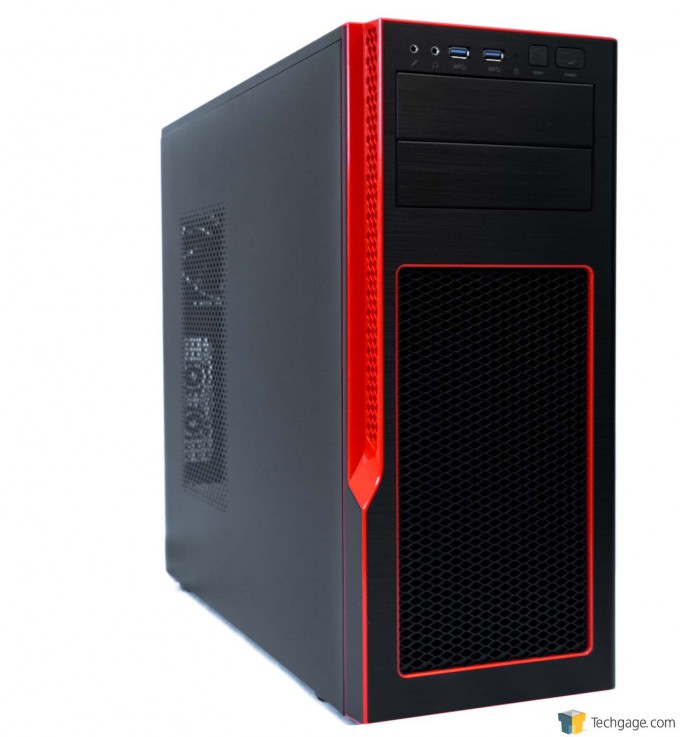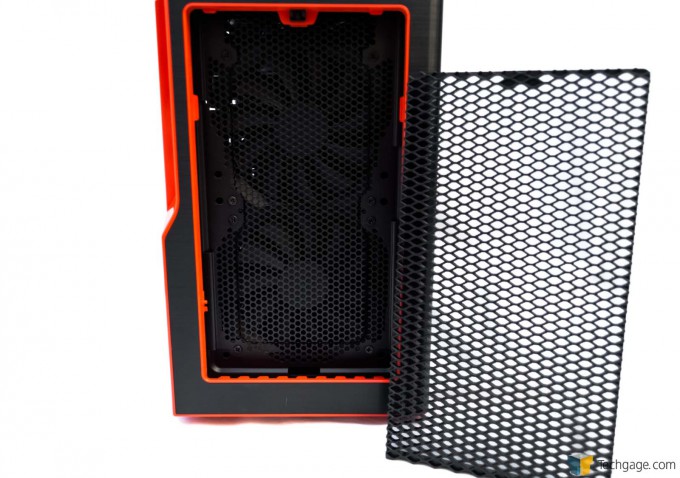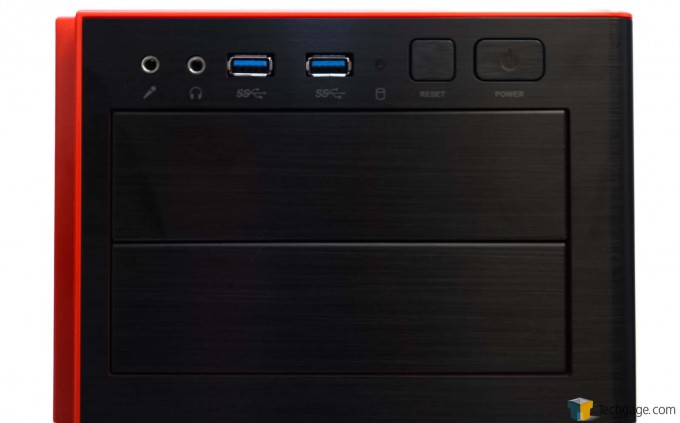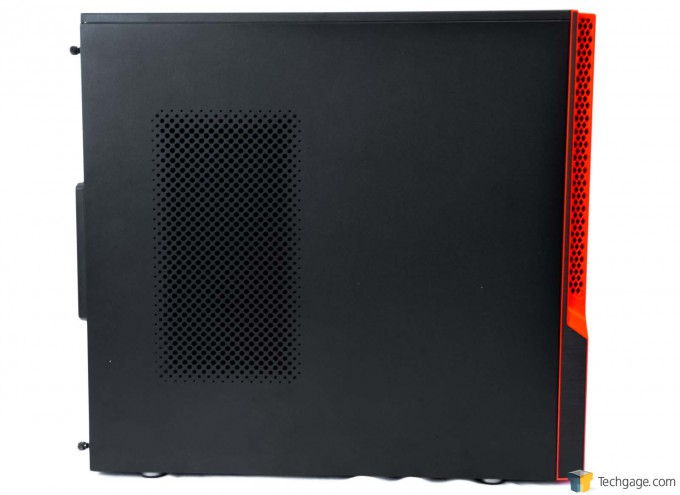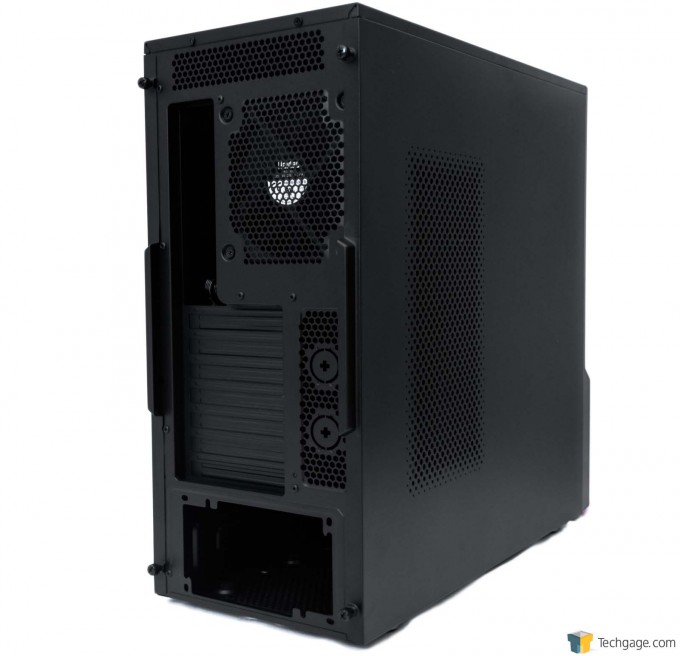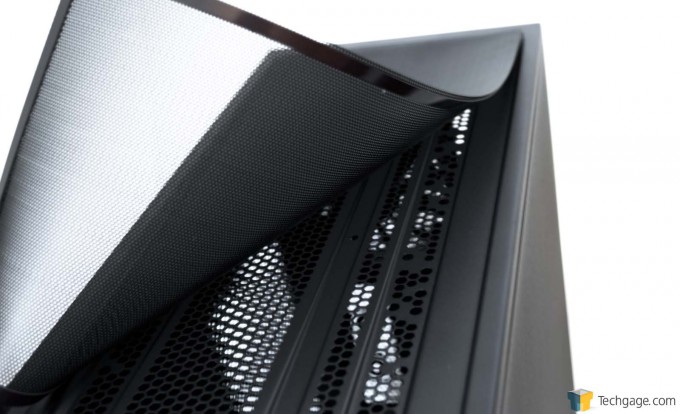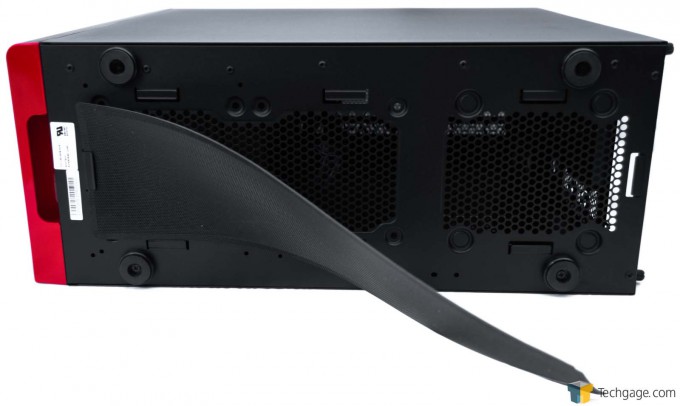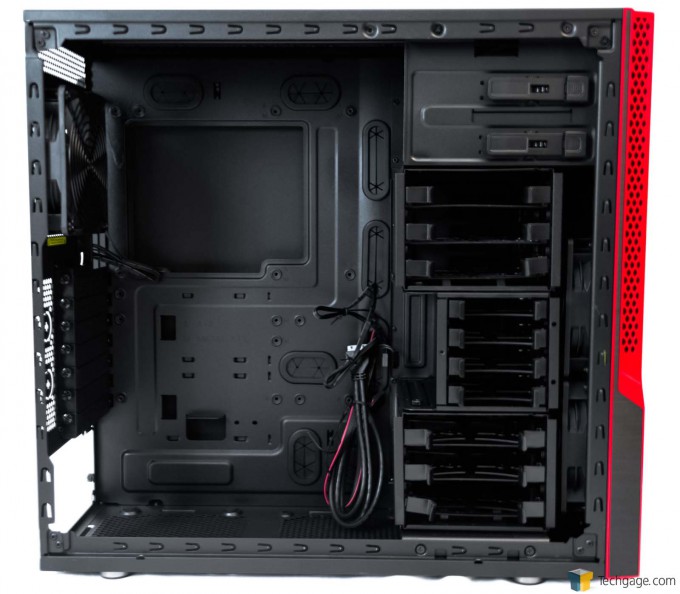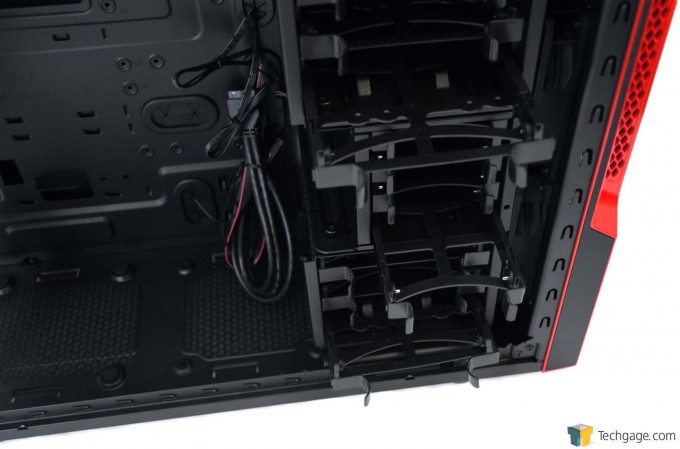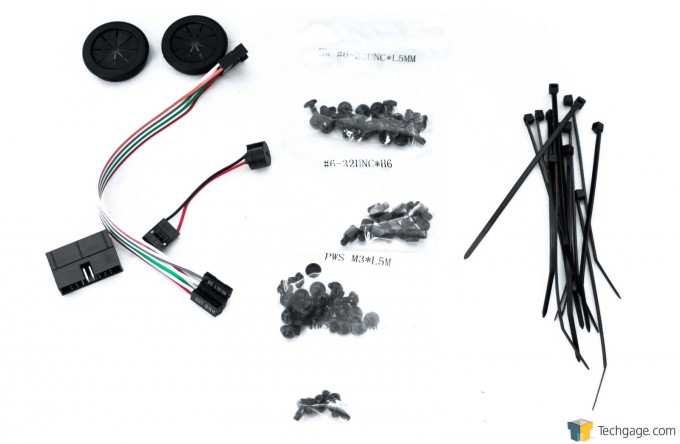- Qualcomm Launches Snapdragon 4 Gen 2 Mobile Platform
- AMD Launches Ryzen PRO 7000 Series Mobile & Desktop Platform
- Intel Launches Sleek Single-Slot Arc Pro A60 Workstation Graphics Card
- NVIDIA Announces Latest Ada Lovelace Additions: GeForce RTX 4060 Ti & RTX 4060
- Maxon Redshift With AMD Radeon GPU Rendering Support Now Available
Needs Polish: A Review Of The Supermicro S5 Gaming Mid-tower Chassis

Unless you buy server motherboards and proprietary systems, you may not have heard of Supermicro before. With its S5 Gaming mid-tower PC chassis, the company is showing signs of diversifying its market reach. Techgage got a sample, so we put it through the wringer to see just how good it is.
Page 1 – Introduction & Chassis Tour
There are plenty of companies providing all sorts of computing solutions. Some have earned great reputations and, as a consequence, they have acquired the ability to sell their products almost just through name recognition.
You don’t believe me?
Quick, what do you think of when I say “Corsair”? How about “Corsair power supplies”?
The funny thing is, there are also companies who sell their wares without the consumer necessarily knowing who they are. The power supply unit market, in particular, is full of manufacturers who may be anonymous to most consumers but whose products are sold under different name brands. Even mighty Corsair sells PSUs manufactured by other companies.
Supermicro is one of those largely anonymous solutions providers. I’d wager that, unless you’re an IT professional or buy server-grade motherboards and other components, that’s a name you’ve probably not heard much.
Perhaps Supermicro is showing signs that it wants to expand awareness of its brand. One way to do it is to offer hitherto unavailable products to the mainstream market.
One of these products is the S5 Gaming mid-tower PC chassis. The company sent Techgage one so that we can put it through its paces and see how it stacks up against the competition.
And here is the S5 in all its black and red glory. The color scheme certainly is aggressive, and is very similar to the last chassis I reviewed in that particular aspect.
Another similarity, which I’m sure is unintentional, is the asymmetric detailing, particularly in the S5’s fascia: The left side of the fascia has a sculpted ornamental treatment picked out in red quite unlike the opposite side’s simple beveled edge, which is in black. It’s an interesting visual feature. That left edge of the fascia has an array of diamond-shaped intake holes going down two-thirds of its length. The opposite edge of the fascia has no matching array of intake holes.
Speaking of intakes, the S5 features a large intake vent on the front to feed the two 120mm fans installed there. That intake dominates the view at the front. A removable grill facilitates maintenance of the dust filter here. You’ll need to remove the drive cages inside the chassis to get to the fans.
Above the front intake and the pair of 5.25″ optical drives is the I/O cluster. The various ports and buttons are presented asymmetrically here. From left to right are the 3.5mm mic-in and headphone-out jacks, a pair of USB 3.0 ports, the HDD activity LED, the square reset button, and the rectangular power button. The presentation is simple, with the asymmetry lending things a bit of visual flair.
The S5 is pretty plain after all the details in the front fascia. The only things that stand out from this profile shot are the vertical array of intake holes on the edge of the fascia and the vents on the side panel.
This view shows the S5’s rear and side. There’s really nothing too outstanding here. The S5 has seven PCI expansion slots, which is fine for most builds. Also notable is the pair of knock-out tubing holes for externally-mounted radiators; most chassis have these holes already punched out and covered with rubber grommets, but the S5 leaves the user the choice to open these up if desired. Finally, there is a 120mm fan in the rear exhaust position.
Moving on to the roof of the S5, we see a flexible magnetic mesh cover. We’ve seen this feature in various other chassis. It’s an elegant solution, so it’s no surprise to see Supermicro adopt it for the S5.
And on the bottom of the chassis we see another magnetic dust filter protecting the floor intake vents. We can also see the S5’s quartet of circular feet, which provide a scant inch or so of lift.
Popping off the side panels we can have a look at the S5’s all-black interior. The highlights include two pre-installed standoffs on the motherboard tray (the top and bottom ones closest to the front of the chassis), smallish cable management openings covered up with rubber grommets, a good-sized cutout on the motherboard tray for access to the motherboard’s CPU socket area, and the astonishing number of storage devices that this chassis can support. All told it can fit eight 3.5″ HDDs and four 2.5″ drives; all these devices are housed in three removable drive cages.
The S5 is compatible with motherboards up to ATX-spec.
Here’s a detail shot of the tool-less storage drive retention system. The drives sit in a plastic sled sans screws; once you have a storage drive in the sled, you just slide it back into the cage.
We’ll end our visual tour with a look at the accessories that come with the S5. There are a bunch of screws and standoffs for your build, as well as a generous helping of nylon zip-ties for cable management purposes. Also included are an adapter unit the front-panel headers (this chassis was originally designed to be compatible only with Supermicro’s own motherboards, so the front panel cables’ pin-out is housed in a proprietary connector), a PC case speaker, a pair of circular grommets in case you do use an externally mounted radiator, and a perfunctory user’s guide.
Now that we’ve had a look at the S5, let’s see how well it performs.
Support our efforts! With ad revenue at an all-time low for written websites, we're relying more than ever on reader support to help us continue putting so much effort into this type of content. You can support us by becoming a Patron, or by using our Amazon shopping affiliate links listed through our articles. Thanks for your support!




